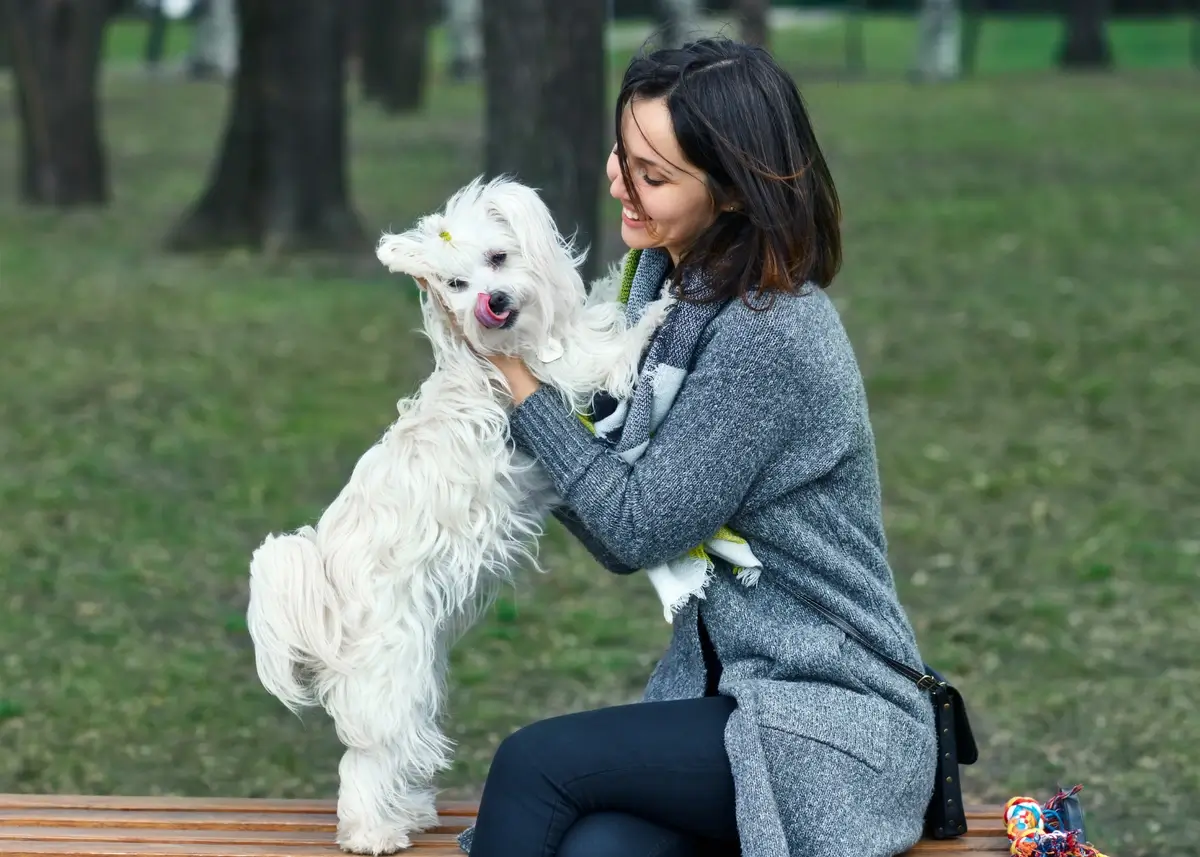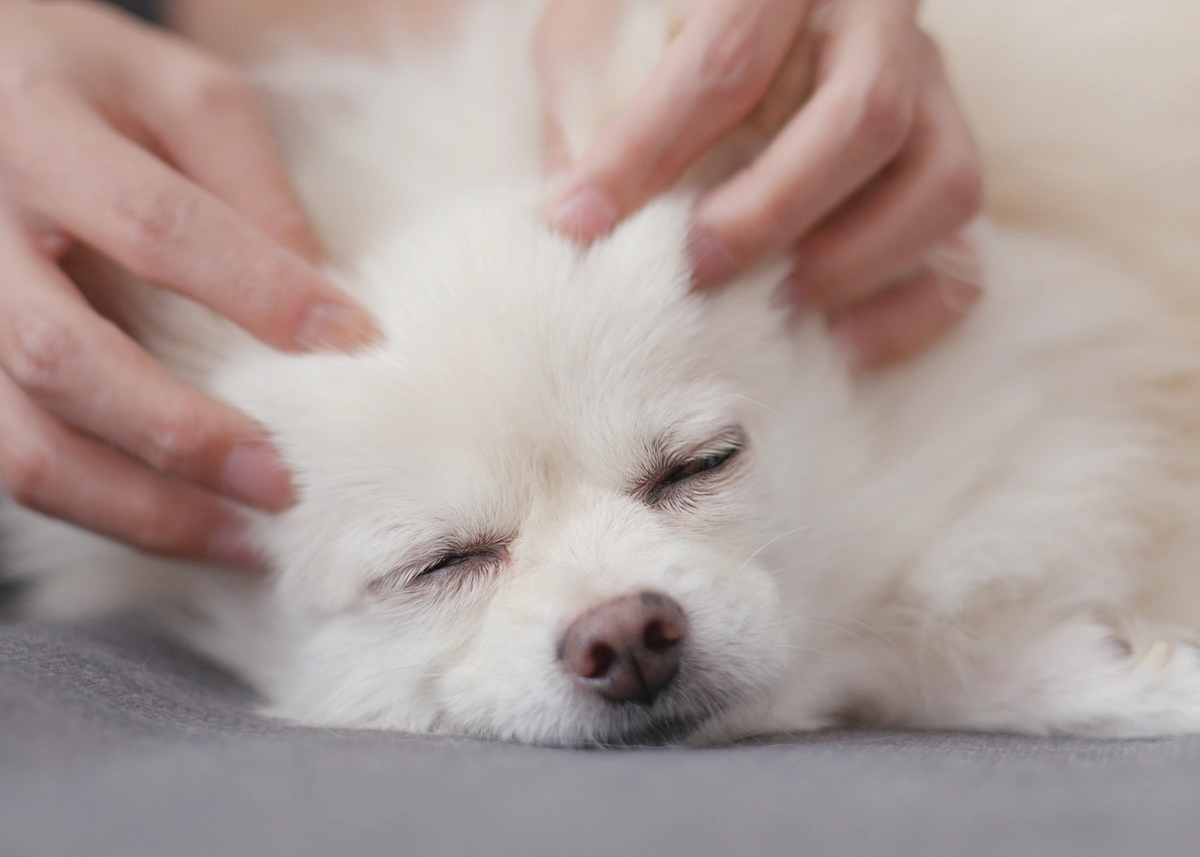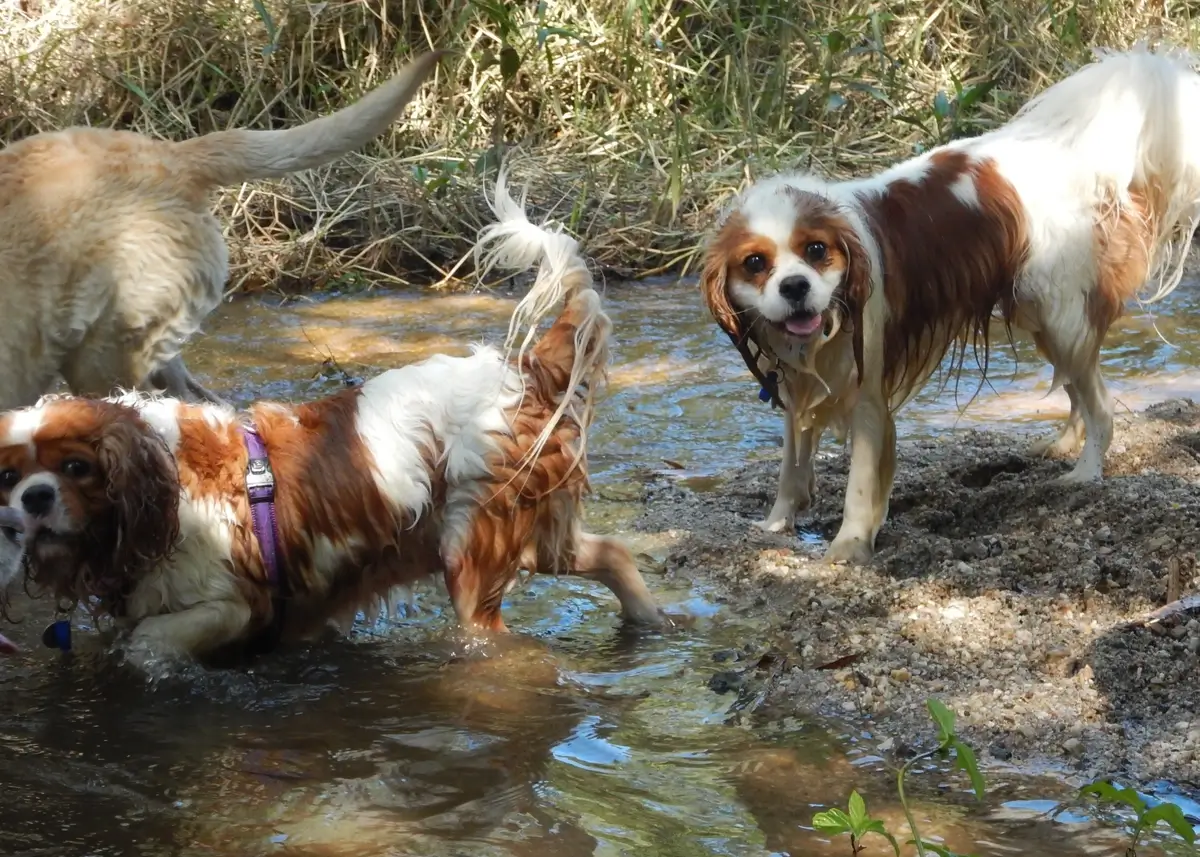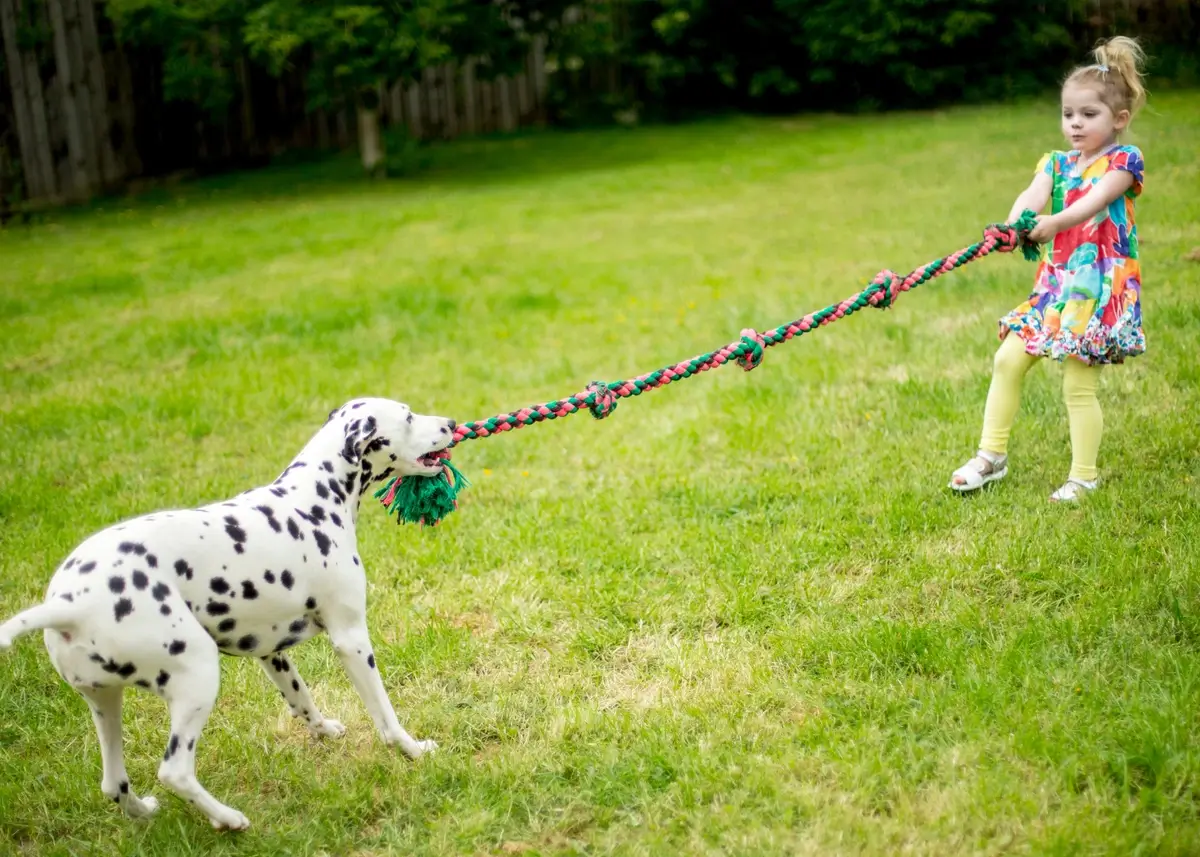Bonding with your puppy is one of the most important things you can establish as soon as your new puppy comes home. Even if you have prepared all you can for a new puppy to arrive, your work has just begun when those paws pitter-patter across your floor.
Just like everything else with a puppy, forming a bond with your new puppy takes a lot of time and effort. If you want to show your puppy gratitude and demonstrate how much you love them, you may be looking for suggestions on how to achieve a strong bond with your puppy.
The more you invest in your puppy's training, socialization, and quality time, the stronger your bond will become. Bonding with your puppy sets the stage for a lifelong friendship and a deep connection that will continue to grow and strengthen over the years. This companionship brings joy, love, and fulfillment to both you and your puppy.
You may be thinking, “How do I bond with my puppy?” We’ve got 14 tips for forming a strong bond with your puppy that will last a lifetime.
How Long Does it Take to Form a Canine-Human Bond?
A canine-human bond is established when an animal forms expectations of human behavior learned over time. Your puppy will quickly learn what pleases you and which behaviors you want them to show. However, this doesn’t happen overnight. While there is no set amount of time your bond will be completed, we do know of important milestones in a puppy’s development that will help you learn what is normal behavior for a growing puppy.
Months 1-2
While Pawrade does not allow puppies to go home before 8 weeks of age, our trusted breeders have already gotten started facilitating bonds. During the 6-8 week period, puppies are starting to become aware of emotional bonds rather than just seeking out physical needs. They’re using their 5 senses to begin exploring the world around them. All they’ve ever known is the safe, secure space of their mother. Human interaction should be an extension of that environment.
Months 2-3
Months 2-3 is typically when a puppy leaves its mother to begin a new life with you. Be very understanding during this time because everything is new, and your puppy is still learning how to be a dog and adjusting to a new environment. It will take some time for your puppy to learn and respond to its new name.
Great ways to bond with your puppy will encourage socialization and basic training skills. Be sure to also expose them to different stimuli like sounds and environmental noises so your puppy can learn to focus on you and not be distracted or scared of everyday objects or noises in your routine.
Month 4 and beyond
Bonding with your puppy during this time will involve reinforcing what you’ve already done and building upon it with more in-depth opportunities to bond. Your puppy is a bit older and has learned a few basic commands. You should have established a daily puppy routine to let your puppy know what to expect every day. Some methods, such as extended trips, will require solid training skills and manners. You can also teach your puppy more intense training commands and even some party tricks.
You can’t try sporadically to form a bond; it needs to occur with repeated efforts over a consistent period. Knowing more about what is developmentally appropriate will help you cater your efforts to meet them where they are as growing puppies.
Bond With Your Puppy with These 14 Methods
From learning the proper touch to how to play with your puppy, spending time bonding with your puppy is always time well spent. Here are some fun ideas you may not have thought of when determining ways to bond with your puppy.
1. Understand canine body language
You can’t set your own agenda for puppy bonding unless you learn to interpret canine body language. You want to try and get on the same wavelength as possible with your puppy. Recognizing canine body language will take some effort on your part. Start noticing actions so you can put together what they’re doing and why they’re doing it. This will help you anticipate their needs, like when they’re overexcited and need a rest, or their cues telling you they need to go potty.
2. Pet your puppy correctly
Bonding with your puppy begins with touch. You may think this may be a silly one, but not touching your puppy correctly could actually cause your puppy to fear you and become aggressive. Using a gentle touch, start by stroking their back near their tail. Puppies might not want you up in their face even though you want to pet them because they are so cute! Remember to pet your puppy in the direction of its hair growth. Watch for signs your puppy is done with the petting session, as all puppies have a different tolerance.
3. Learn to give a puppy massage
Every puppy loves a proper puppy massage! When you touch your puppy all over, you are helping them get used to being handled, which will come in handy at the groomer or the vet’s office. You’ll be able to check for fleas, ticks & other parasites, lumps, or painful skin infections. Be sure to include their paws in your massage to check their paw pads and prepare them for nail trims. Puppy massages have therapeutic benefits which also aid in bonding with your puppy.
4. Pick up your puppy properly
Most people think the right way to pick up a puppy is to grab them under their front arms and lift them up just like an infant. However, this could hurt your puppy and isn’t the preferred way at all. Instead, learn to pick up your puppy properly using these tips:
- Crouch down and talk to your puppy to engage. Don’t just randomly surprise them (unless you must in an emergency).
- Using a slow cradling motion, slip one hand between your puppy’s front legs and under their chest supporting their body, and use your other hand to support their back end. Keep talking to your puppy in an upbeat tone.
- Slowly lift them up and lower them down – you don’t want them to feel like they’re on the tallest roller coaster at Puppy Land!
- Continue to support your puppy’s body, and watch for canine body language expressing that the puppy is done with the cuddle session.
- Teach your children how to pick up and put down a puppy as well as the concept of using “gentle hands.”
5. Brush your puppy
A good brushing session is akin to putting on a clean pair of clothes for your puppy. They look and feel their best. Not only does brushing your puppy prevent painful mats and keep the fur in your house to a minimum, but it also helps stimulate their natural oil glands to distribute the oils for a shiny coat. Each type of dog coat needs a particular brush or comb, so be sure to choose the right dog brush for your breed’s fur or hair type.
6. Try a DIY grooming session
You may want to combine touch and brushing by taking it further with a DIY grooming session at home. What puppy doesn’t like undivided attention and pampering? The warm water can be soothing, and you can even play relaxing spa music to enhance the experience. And even if your bath looks nothing like a peaceful experience, at least you can laugh about it when it’s all over!
7. Buy an exciting new toy
Selecting the right toy for your puppy can give you “analysis paralysis” because there are so many to choose from on the market! When looking to bond with your puppy, select a toy with an interactive component so you can engage rather than watch your puppy play with it. However, don’t just give your puppy its new toy and expect that to be your bonding time. You need to play with your puppy! Show your puppy how to use the toy and begin a fun play session.
8. …or make them a DIY puppy toy
One labor of love that will be appreciated is giving your puppy a mentally stimulating DIY homemade dog toy. You don’t have to spend a lot of money on supplies – in fact, you may have items hanging around your house, like a cardboard box or items to build a homemade agility course. While your puppy won’t be able to thank you directly, the fact that you were thinking about your puppy while making it and dreaming about how your puppy will have so much fun will help you create those bonding neuropathways.
9. Go dog parkin’ or creek stompin’
Having an outdoor adventure can get you both out of your comfort zones and allow you to explore your city and beyond. Choose a new dog park you’ve never been to, find a dog-friendly creek or beach, or decide on a new dog-friendly greenway or trail to visit. The change of scenery will keep things fresh and exciting for both of you as you take in new sights and sounds.
10. Take a class together or try a new activity
All puppy owners have a responsibility to train and socialize their puppies. Once your puppy has received its necessary core puppy vaccinations, we recommend signing them up for an activity outside your house with other puppies and owners so you can form both human and canine bonds while learning new skills. Activities like puppy kindergarten, obedience training, agility courses, or other dog sports are terrific ways to get your puppy to learn new concepts while bonding with them.
11. Be present during walks
One of the most important things you can do when walking your pup is to be fully present on your walks. This isn’t necessarily the time to catch up with a friend on the phone or stop for a long chat. If the purpose is to bond with your puppy, merely attaching them to a leash and taking them around the block is not being present. If you are multitasking, you may miss important cues, like how their tail is wagging (i.e. is it up and stationary or low and wagging)? You may also miss opportunities for training if you aren’t paying attention. Here are 18 dog walking tips to get the most out of your time together.
12. Play a ruff-and-tumble game of tug-of-war
Some people may think playing tug-of-war with your puppy will teach them to be more aggressive, but several scientific studies have debunked this myth. Tug-of-war actually serves several purposes for your puppy. It helps them build confidence by letting them win every now and then, improves their coordination, provides a full-body workout, and promotes good dental health. Tug-of-war games will help you bond with your puppy because you’re teaching your puppy to trust you and work together as a team.
13. Have an extended cuddle session
One way to bond is to do nothing at all and to just be near each other. Create a soft little nest for your puppy near you, either on the couch or the floor depending on your house rules for puppies on furniture. Put on your favorite guilty pleasure dog movie, like Air Bud or Snow Buddies, and snuggle with your puppy until they fall asleep.
14. Keep up with vet visits
You want your puppy to remain as healthy as possible to prolong their life to keep the bond growing. You’re showing you care about their health and well-being by choosing the right veterinarian for your puppy and bringing them in for well-checks, not just when there is a medical emergency or a problem.
Remember, bonding with your puppy requires time, patience, and positive reinforcement. Provide plenty of love, attention, and opportunities for play and exercise. By focusing on building trust and understanding and creating positive experiences, you can strengthen the bond between you and your puppy.
The Importance of Staying Positive
When raising a new puppy, we may become frustrated with several factors affecting our willingness and ability to bond. Whether you’re having a hard time with potty training your puppy, getting frustrated with basic puppy commands, or not sleeping very well, none of these are excuses to exhibit your displeasure to your puppy.
No matter how frustrated you become, never show outward frustration toward your puppy. Studies have shown that negative interactions with animals can destroy any bonding efforts, even when you have more positive bonding experiences than negative ones.
Several factors may affect your willingness to bond. We mentioned frustration, which can lead to you not taking the time to try and bond with your puppy. You may not have anticipated how much time puppies take up and their constant need for your full attention to be present. And even if you have the patience and time, you may be overwhelmed with keeping everyone’s needs met, including your puppy!
All of these factors can have adverse effects on your attempts to form a bond. It may not be something that comes easily to you since you now have to manage another living, breathing creature, but it’s a crucial part of raising a puppy.

Even worse are humans who think it’s okay to physically strike, smack, or hit their puppy for developmentally appropriate behaviors, even if they are undesirable to humans. That’s animal abuse! It’s up to the human to remain composed in front of their puppy and handle the situation in ethical, appropriate ways. It’s your job to teach your puppy correct behaviors using consistent training methods based on positive reinforcement, not punishment.
When you are not taking a positive, upbeat approach to bond, you can irreparably ruin a strong foundation and instead cause your puppy to avoid and fear you. That’s why it’s so important to always remain upbeat and positive if you want to create a meaningful bond.
Form a Bond With a Pawrade Puppy
Developing a bond with your puppy begins the moment you find your perfect puppy. If you’re tired of trying to do all the legwork on your own, we have already formed partnerships with trusted, reputable breeders who love your puppies as you will. Each puppy is covered by a 3-year comprehensive health guarantee, and you’ll be delighted with your new happy, healthy furry friend.
We’d love to help you bond with a new puppy. Check out our puppies for sale to start forming your bond with your puppy!






